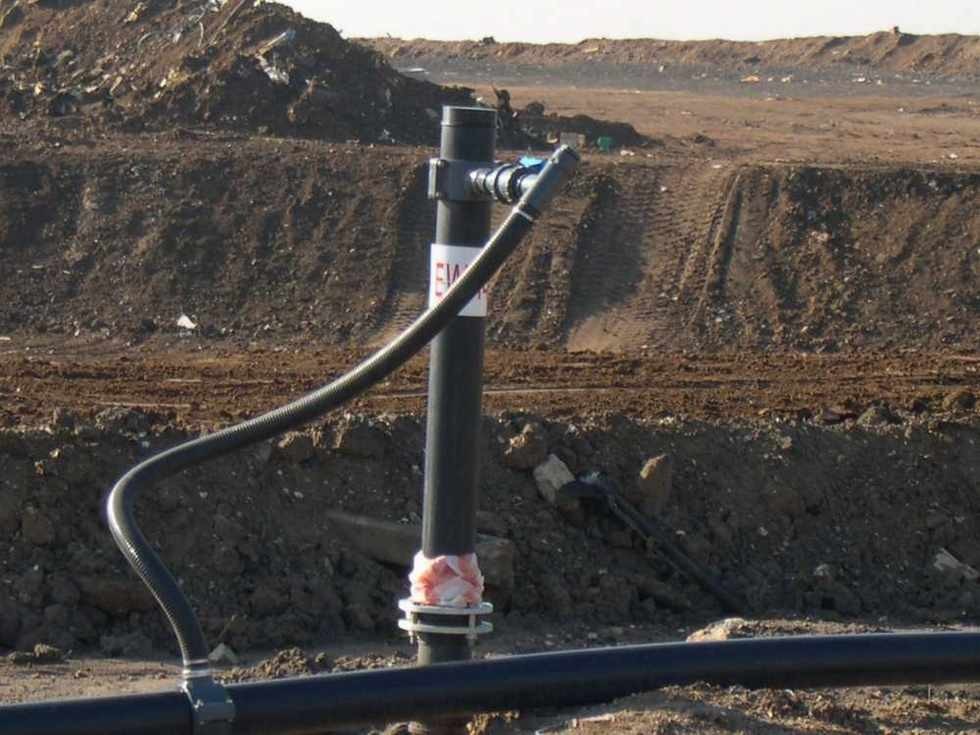

Biogas Extraction - Turning the Landfill Gas into a Resource
The layers of waste in the Hiriya mountain retain deposits of methane gas and CO2 referred to as biogas. This is an environmental nuisance contributing to global warming and it is also a fire hazard.
On the other hand this property of the gas enables its use as a combustible fuel for energy production. In other words, the waste becomes a resource.
In 2003, the Dan region Association set up a system for extracting and collecting biogas from within the garbage mountain. The system extracts the gas from the mountain in a controlled manner, preventing its emission to the atmosphere.
Initially, some 70 biogas wells were drilled into the depths of the body of waste, spread out in nine clusters. The wells are 12 to 27 meters deep and depend on the levels of the leachates in their respective locations.
The gas, after being extracted from each cluster, is sent to a main pipe, and from there on to the collecting system at the foot of the mountain.
Today the gas collection network consists of about 100 wells throughout the rehabilitated waste mountain.
In 2005, the Association signed an agreement with the Dan Gas company (currently renamed Ayalon Biogas) to buy the extraction rights. The company has upgraded the system, expanded it, and laid underground pipes. The piping exits the Hiriya site via the Ariel Sharon Park, crosses the Jerusalem-Tel Aviv road (highway 1) and reaches as far as the Offis Textile factory - a textile finishing plant for dying fabrics. At the factory, Hiriya’s methane gas is used as an alternative energy source replacing the polluting fuel oil previously used, while at the same time substantially reducing the factory’s expenses on energy.
Nowadays the ArrowBio factory is also a source of biogas, in addition to the gas being extracted from the garbage mountain.
The gas extraction from the depths of the mountain and its transfer to the factory is the first Israeli project to receive recognition as a CDM project under the UN Kyoto protocol.
CDM (Clean Development Mechanism) is the economic mechanism facilitating international trade in greenhouse gas reduction rights. The goal is to integrate clean technologies in developing countries and to make it easier for developed countries to achieve the greenhouse gas emission reduction targets. These targets were imposed upon them in the Kyoto Summit, through buying “emissions reduction credits” from developing countries where there are projects recognized by the UN as CDM projects (projects through which greenhouse gases are reduced). Israel was classified under the Kyoto protocol as a developing country, and therefore developed countries can buy emissions reduction credits from it. The reduction credits have been traded in the global exchange since 2008 and they were sold to the French electricity corporation EDF.
The receipt of the dividends for the reduction credits is conditional upon the ongoing monitoring of the system and its continuous tracking. For each ton of gas, proof is required that the gas did indeed get sent to the Offis Textile factory or that it was incinerated in the flare during the hours where the factory is not operating.
